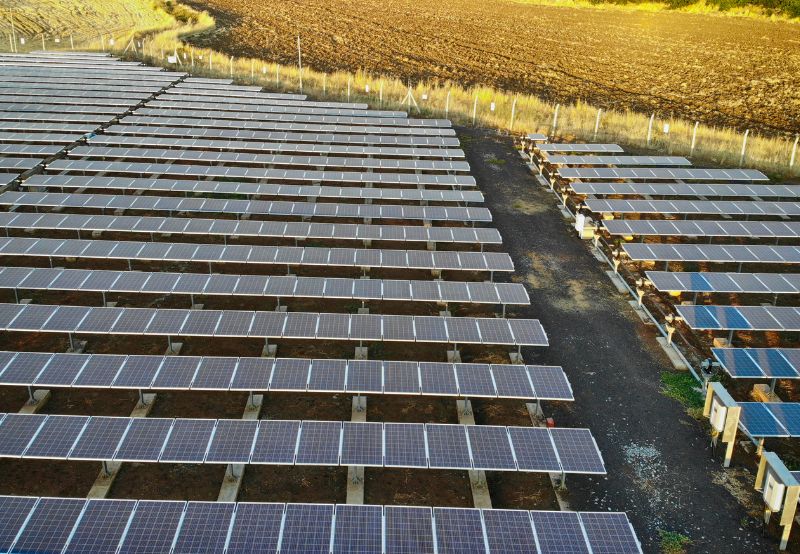Every project must ensure environmental, financial and social sustainability, and the bees and their hives are only one part of the story. Correct situation analysis and a good understanding of markets and trade are crucial in using apiculture to move people out of chronic poverty.
CONCERNING BEES
Use only local species or subspecies of bees and learn about local bee biology and behaviour. Honeybees naturally live inside tree cavities, or in beekeepers’ hives. The commonly used species is Apis mellifera, which occurs naturally in the north of the Arctic Circle, and throughout Europe, the Middle East and Africa. This bee has been introduced worldwide, and is now found almost everywhere. There are many different subspecies with different characteristics that enable them to survive across widely varying climates, from -20 °C in European winter to 40 °C in the Middle East. That said, wherever there are flowering plants, there are bees, and many other bee species produce honey, beeswax and propolis (as discussed in later chapters), on which people build livelihoods.
Many developing nations are in tropical regions of the world, and tropical bees have biology and behaviour hugely different from bees that have evolved to live in regions with temperate climates. As such, apicultural techniques that work well in industrialized nations in temperate climates are not necessarily well suited to tropical climates and remote rural areas. Bees live freely in nature; they cannot be contained like other animals, and feed and mate freely. Never introduce bees from another region – this is how honeybee parasites (like Varroa) and viruses have spread in recent years. Because bees mate naturally in the wild, there is no point in introducing bees since it needs to be done continuously, year after year, which is not sustainable beekeeping. It also interferes with native bee populations that have evolved to thrive in local conditions. However, because people make money from selling bees and extolling one type over another, much unnecessary and damaging trade and movement of bees takes place. If you are confused or unsure about the information available locally, contact a reliable organization like Apimondia for impartial advice.
SITUATION ANALYSIS
Beekeeping is commonplace in poor rural communities worldwide where it is a resilient, sustainable and low-risk activity. However, people and apiculture are not the same everywhere, and subsistence beekeeping does not necessarily create wealth. Try to identify the true constraints, if any, that existing local beekeepers are facing. Accept that long-lasting development takes time, and be prepared to invest in training so that skills are available in the long term. A truly sustainable beekeeping project will build on local beekeeping skills, expertise and resources, and provide training and follow-up support for at least two years. It will be necessary to make decisions concerning the delivery of training and follow-up support. For example, for Bees for Development’s projects in Ethiopia, a model of lead beekeepers and followers works well. Elsewhere, more formal training delivered by local skilled beekeepers has worked better than a model of master beekeepers who are expected- ed to pass skills to new beekeepers; this has proved highly effective in Ghana. It is important to find the best model for each context, which will depend upon several local factors including cultural norms, the social fabric of village life, prevailing beekeeping skills, and transport resources.
SCALE AND EFFICIENCY
Beekeepers need business skills to weigh up the implications of direct costs, selling prices, indirect costs and volume. Enterprise analysis has revealed that focusing on volume as opposed to price per kg, which is the usual approach, can be key to increasing total yearly income from an apiary. Projects should invest in building the competent business skills of beekeepers.
TECHNOLOGY
Many governments implement plans for the modernization of agriculture, and a plan for the modernization of apiculture is also a good idea. There have been many interventions that primarily seek to change the types of hives that beekeepers are using, in the belief that this will lead automatically to more honey, better-quality honey and increased productivity. While it is expected that changing technology will result in poverty alleviation, there has been little evaluation of the change these interventions have achieved. Where the expected change has not occurred, too often it is it blamed upon insufficient training, the weather or another variable, without questioning whether attempting to change technology is indeed the correct approach. Pro- jects focused on provision of equipment are most profitable for the businesses making and delivering equipment, and consultants providing teaching on their use with bees in the consultant’s own world region.
Many African nations (such as Ethiopia, Tanzania and Zambia) are successfully exporting high-quality honey and/or beeswax to be sold within the EU and other world markets, and meeting the world’s strictest criteria for these products. Every drop of this honey and beeswax is harvested from local-style hives, which are the gold standard in simple, cost-effective, natural and sustainable beekeeping. Frame hives like the Langstroth hive, which was patented by the Rev Langstroth in 1852, are sometimes referred to as “modern” hives in Africa. However, it is their low-cost, easy-to-make, widely available and efficient local-style hives that should bear this name. We now understand that the reason large populations of healthy honeybees are still prevalent in Africa is the widespread prevalence of simple, natural beekeeping in simple, cylindrical beehives.
Logs, reeds, grass and clay are the typical materials used to make local-style beehives. The usual design is a cylinder, which offers honeybees an attractive nest space. With no movable parts, the bees fix their combs to the walls of the cylinder. Tried and tested over many years, these types of hives are shown to function efficiently, and because these hives are made from locally available, natural resources, they are cheap and accessible to even the poorest people. Poor farmers are widely encouraged to commercialize to increase their incomes and many people assume that commercialization calls for a change in technology. The abandonment of simple local hives is encouraged in favour of so-called “modern” hives. This kind of intervention results from insufficient analysis of the situation and is often an inappropriate approach. Cost-benefit analyses sometimes show that a beekeeper can pay back the cost of a frame hive after a few years, but these forecasts are rarely based on actual field data. Svensson (2002) reports on the failure of beekeeping projects developed on the basis of poor analysis and false projections. Even if a beekeeper can pay back after four years, for example, they do not have the money to invest in the first place and are forced into a debt situation.
In a paper describing the producer-owned company North Western Bee Products in Zambia, Wainwright (2002) reported that “it would be difficult to manage the African bees in these [frame] hives. Most importantly, the high capital cost of the hives would burden the beekeeper with debts [he] would be unable to repay.” Conversely, giving out free hives is never sustainable either. Beekeeping projects have become popular with donors and non-governmental organizations (NGOs), and for good reason. However, the demands and expectations of donor-funded projects drive NGOs to design projects with visible and measurable outputs.
It is easy to draw up a budget for a certain number of hives and once delivered, they can be photographed and counted, helping the NGO to prove that it has implemented the project as planned. It is much harder to see and measure a new skill or a new market link. Spending money on hives also pushes up the costs of projects without increasing the complexity of design or delivery. For implementing organizations surviving on a percentage overhead of total project costs, simple yet expensive projects are attractive. However, development projects often wrongly assume that “modern” hives will help people earn more money from beekeeping. When considering quality, honeybees living in frame hives and those living in local-style hives are identical, feeding on the same flora, in the same place, making the same products. What differs are the harvesting and post-harvest handling methods.
Some beekeepers using local-style hives harvest carelessly and offer low-quality products to the market. However, closer analysis shows that the market in which they sell accepts the standard of their products, and beekeepers have no experience of different market require- ments. This is a valid and useful area for project intervention. Because beeswax is recycled in frame hives, the overall harvest from frame hives constitutes more honey and less beeswax than is obtained from local-style hives. However, beeswax is a useful product and in many ways an easier product to store and sell than honey. It is also currently in high demand on the world market. Recycling comb has no economic benefit when there is significant income to be generated through the sale of beeswax, and foundation is either expensive or not available.
One beekeeper in Uganda said, “I was advised to provide foundation for my bees because then they can spend more energy making honey, and I can get more honey more quickly for selling.” His neighbor replied, “All bees need wax comb. If I have to provide foundation, I have to take money out of my pocket to buy it; I would rather the bees made it for themselves for free.” Furthermore, while frame hives enable combs to be inspected and placed back in the hive, tropical bees are often quick to abscond when manipulated. Frame hives also enable combs to be replaced following the extraction of honey, using a centrifugal extractor, but because centrifuges are expensive and may only be used perhaps once or twice a year, they must be stored and shared at a central location. This means boxes full of frames must be transported to the processing centre on foot or by bicycle, an expensive, time-consuming and dusty exercise.
MARKETS AND TRADE
Before beginning any intervention, do all that you can to understand the local market system. Once your project begins, build a supporting environment and listen to beekeepers, evaluating and recording progress. Commercialization of beekeeping means achieving scale and efficiency. True production costs must be calculated to ensure profitability. Local-style hives are more profitable than frame hives because they are so cheap to produce, and despite assumptions and statements, there is no evidence that frame-hive beekeepers in sub-Saharan Africa harvest greater total volumes of honey than beekeepers using large numbers of local-style hives. Markets that are accessible, rewarding, reliable and fair will encourage beekeepers to invest more in beekeeping. Supply chain problems are very typical in poor nations and stem from poor market information and linkages, lack of working capital, lack of containers, low investment and poor communication. Projects should therefore focus their efforts on tackling these problems.
HARVESTING AND HANDLING FOR QUALITY
Any beekeeper who follows simple, good practices can pro- duce high-quality honey, packaged and labelled as required by supermarkets. All projects should invest in training beekeepers and collection-center staff on the correct methods of harvesting from any type of hive, record-keeping so that product traceability is made possible, and correct post-harvest handling and storage.




